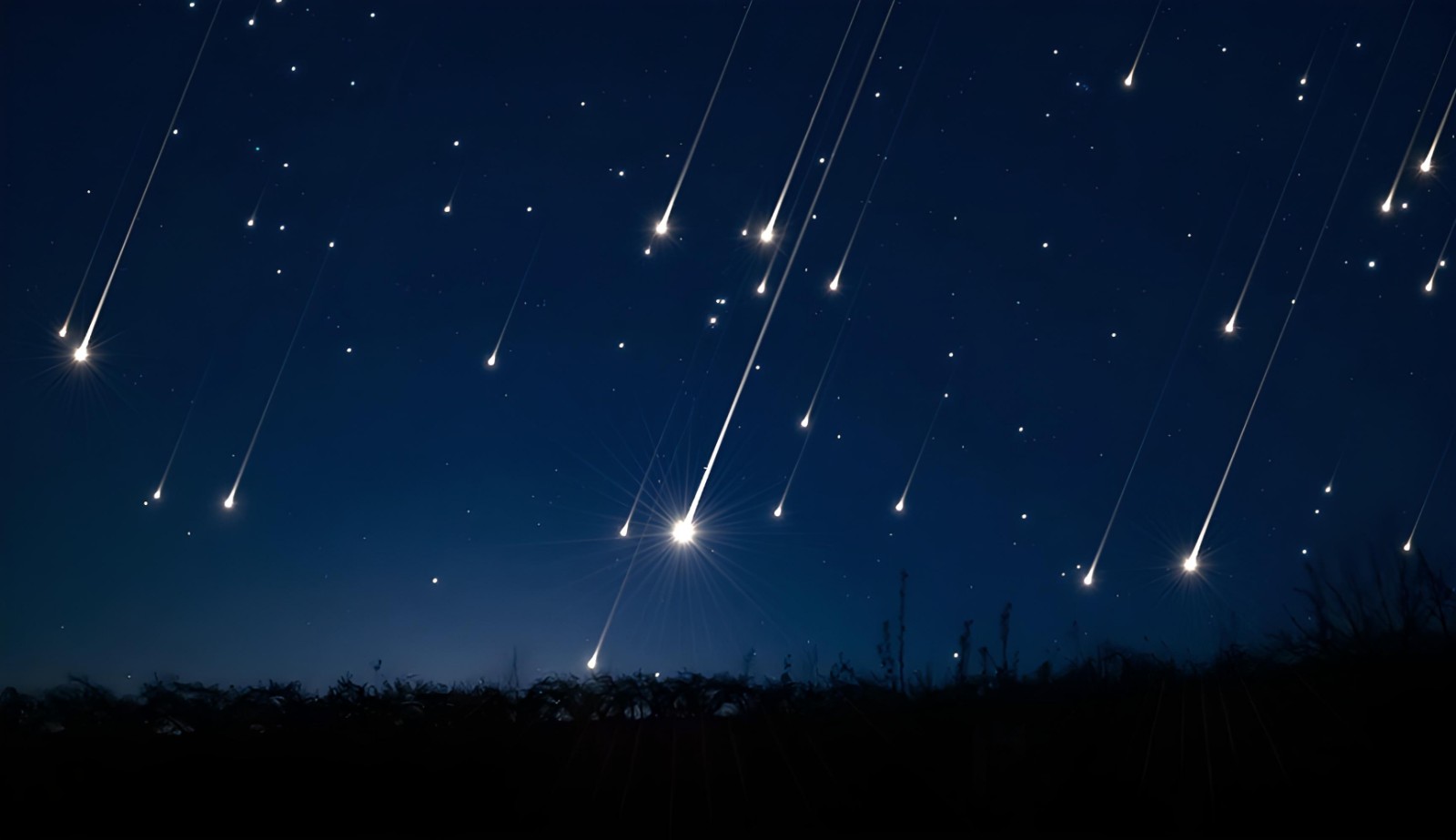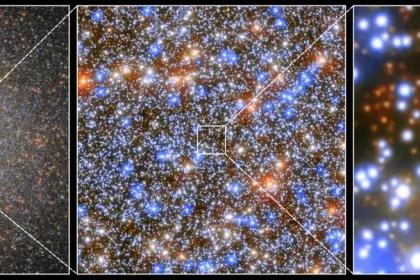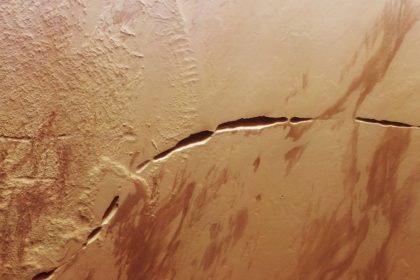One of the main issues throughout the Cold War was the race to the Moon, which the Soviets and Americans clashed in a race that led one of them to the Moon in July 1969. From 1957 through 1969, the Cold War’s focus was mostly on the race to conquer space. It’s where the US and the USSR squared off in a heated technical duel, with both sides looking to prove their mettle. After the launch of Sputnik-1, the first artificial satellite, in 1957, the focus shifted to human missions and the goal of landing a man on the Moon. Before the 1950s, interstellar travel was more science fiction than reality. The notion of transporting an item or a man beyond the atmosphere was not a priority for the Russian or American governments, even if Wernher von Braun collaborated with Walt Disney in the United States to publicize and propagate his ideas of space conquest. However, military engineers on both sides, particularly those specializing in ballistics, were giving this idea significant thought.
- V2 missiles give the necessary boost
- The Sputnik 1 satellite, a world first
- The Sputnik 2 satellite and the dog Laika in space
- Explorer-1, the first U.S. satellite
- The Luna to the Moon program
- Yuri Gagarin, the first man in space
- The American Apollo program’s inception
- The Americans and the conquest of the Moon
- Moving toward Soviet-American collaboration
- Space stations, from Mir to ISS
- Conquering Mars is the ultimate future project
- Upcoming experiments: A lunar base
- The industry of space travel is booming
- TIMELINE OF SPACE EXPLORATION
V2 missiles give the necessary boost
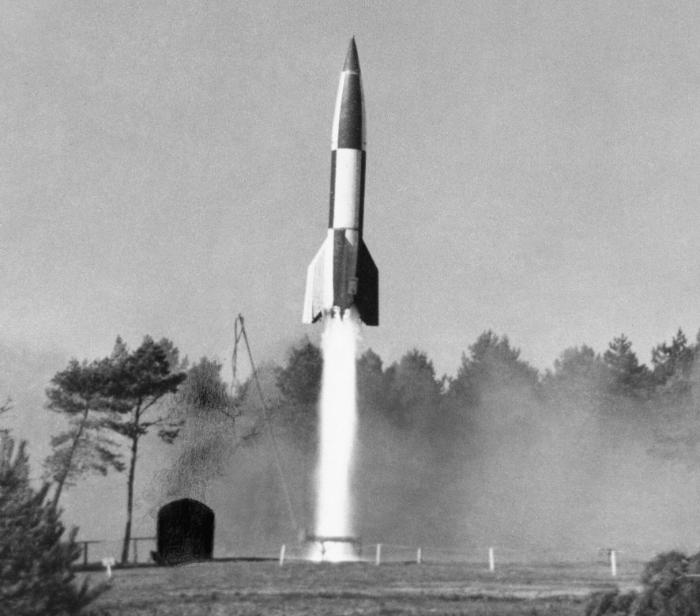
During WWII, Nazi scientists created a brand-new kind of missile known as the V2. They were employed to bomb London towards the conclusion of the war, and their rocket propulsion made them particularly effective. This revolutionary technique allowed for the destruction of the enemy at a great distance (350 kilometers), at high speed (Mach 3.5), and without the need for airplanes.
The Cold War’s armaments competition prompted massive expenditures in research, including this promising new area. The V2s did get attention from both the East and the West. Wernher von Braun, the Nazi engineer who developed the V2, later joined the SS and the American army, and it was he who, together with Walt Disney, educated the American public about space.
The Sputnik 1 satellite, a world first
Despite some lag in the nuclear industry, it is the USSR that has made the greatest use of this innovation. In the 1950s, it began the development of an ICBM that could deliver an atomic weapon. The A-bomb is much larger than the H-bomb. They were dropped from an aircraft over Japan. That’s why it was such an ambitious project: to create a missile with an intercontinental range (a few thousand kilometers as opposed to the V2’s 350) and the ability to deliver a payload weighing several tons. The Ukrainian engineer Sergei Korolev, who was rescued from the gulag during World War II for his expertise in aeronautics, was given the task of leading the project.
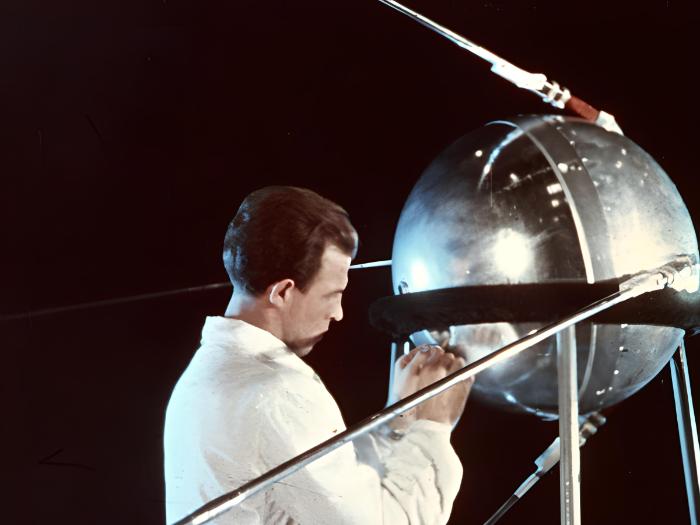
He was granted permission to construct a tiny satellite and attempt to launch it into orbit after seeing the potential of such a rocket and sharing von Braun’s passion for space exploration. Korolev’s rocket design is a step in the right direction. While it had its share of problems during the first testing, it eventually worked well enough to launch Sputnik-1 into orbit on October 4, 1957. What started as a side project has become a significant technical and symbolic achievement, marking the crossing of a new boundary in the human environment. A little unit broadcasts a radio signal—just a beep—that anybody, anywhere may use to verify the Soviets’ claims.
The Sputnik 2 satellite and the dog Laika in space
This is a genuine embarrassment for the United States. This Soviet triumph has serious military implications, but it also severely undermines American faith in its technical dominance. The political power of the symbol is not to be underestimated, as the Soviet Union has always credited its success to the unique character of its own government. Therefore, in the United States, a crew has been assembled to be ready for the first launch. On the other hand, Sputnik-2 was launched by the Soviet Union on November 3, 1957. To further prove the Soviet Union’s progress, it carries a dog by the name of Laika. But unfortunately, the animal does not make it, and Russia is not quite ready to launch a human into orbit just yet.
Explorer-1, the first U.S. satellite
Despite the pressing need, the United States did not want to engage with former Nazi engineer Wernher von Braun, who was developing medium-range missiles, for obvious grounds of public perception. The official Vanguard project had initially failed, but on January 31, 1958, Braun’s crew was given the green light to attempt again with the Explorer-1 launch. It made the identification of the Van Allen radiation belt possible. Wernher von Braun, together with his rival Serguei Korolev, would thereafter play pivotal roles in the conquest of space. The USSR, on the other hand, decided to keep his identity a closely guarded state secret, so he would never get the same praise as his American counterpart.
The Luna to the Moon program
The U.S. eventually caught up and started investing in the long run. With this in mind, at the close of 1958, Eisenhower established NASA (the National Aeronautics and Space Administration). However, with the help of its Luna program, the Soviet Union goes on to become the undisputed leader in space exploration in the years that follow. Leaving Earth’s orbit and heading for the Moon, spacecraft Luna-1 took off on January 2, 1959. The Luna-2 spacecraft successfully landed on Earth’s satellite on September 13. After more than a month of searching, Luna-3 has finally revealed the Moon’s secret side to Earth.
It sends pictures with an uneven face superimposed on the real one. The Russians are encouraged by their accomplishments and decide to restart the Sputnik program, which aims to launch a man into space. Multiple launches occur, each time with a dog on board; unlike Laka, most of the dogs survive the trip back to Earth’s atmosphere. The United States is opposed to the Sputnik program and favors the Mercury program instead. Also in January 1961, thanks to these advancements, a chimpanzee named Ham was sent into space.
Yuri Gagarin, the first man in space
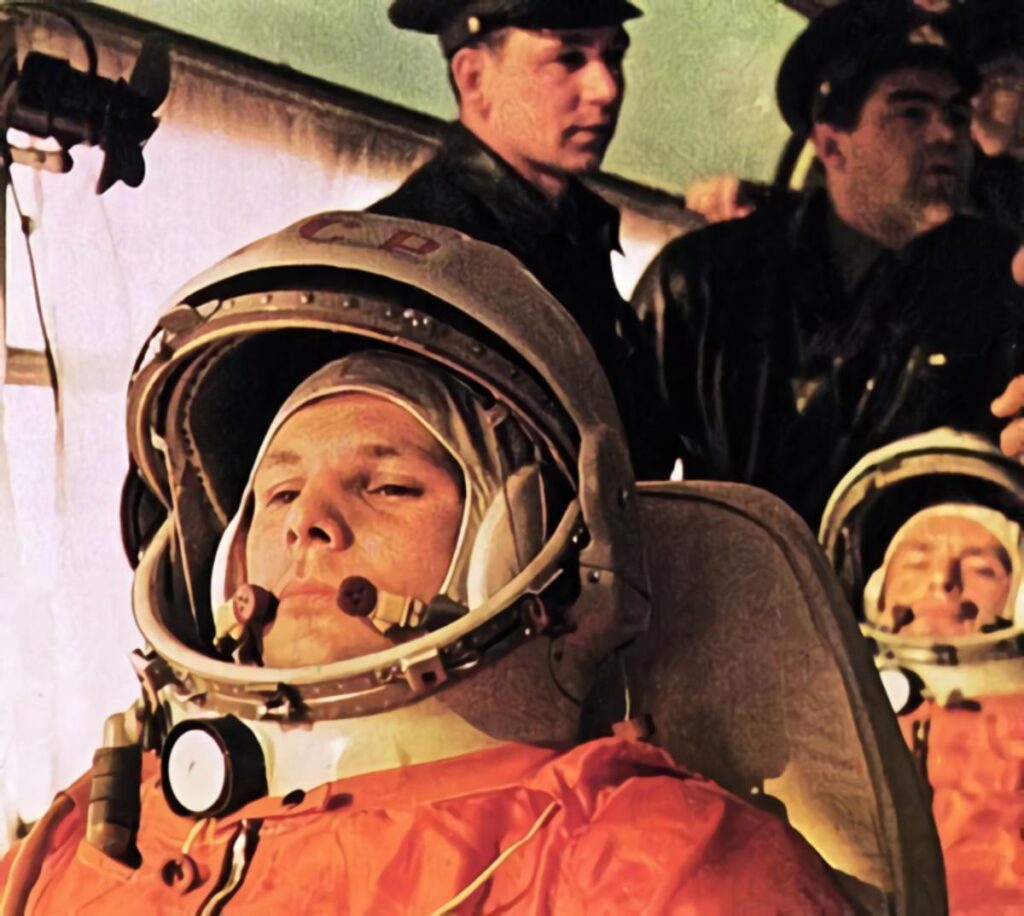
So the Americans go to the Russians and plot to get back at them by launching the first human into space. On April 12, 1961, however, the Soviet Union surpassed them with the launch of Yuri Gagarin on Vostok-1 from the Tyuratam spaceport. At an average height of 250 km, he flew in orbit around the Earth for 1 hour and 48 minutes. The Soviet Union continues to bolster its reputation for excellence in space exploration. As a response, on May 5, the Americans sent Alan Shepard into space, although at a far lower height and for a much shorter duration (15 minutes only).
The American Apollo program’s inception
This was the beginning of the Apollo project, which Kennedy first declared on May 25, 1961, when he said that an American would walk on the Moon by the end of the decade. The Gemini program ran concurrently, enabling a number of experiments in human spaceflight to be conducted in low Earth orbit. The Soviet Union kept working on the Luna project. In a nutshell, the race between the two nations to put a man on the Moon is the ultimate prize.
Therefore, all of 1960 was spent working towards this ultimate goal. There were as many phases to the programming as there were events. It took John Glenn about five hours and twenty minutes to complete three orbits of the Earth on February 20, 1962. In December of that year, thanks to the Mariner program, a U.S. satellite came within a few hundred miles of Venus. The Mariner-4 probe makes its way through Mars in July 1965. On March 18, 1965, the Soviet Union successfully completed its first spacewalk with Alexei Leonov. A few months later, in the context of the Gemini program, the Americans accomplished an identical feat.
The American Apollo program speeds things up significantly. There are three distinct stages of the curriculum. The first, which spanned 1960–1968, included equipment testing during pilotless flights. Since it was Wernher von Braun’s crew that created the Saturn V rocket, their contribution was crucial. During this time, Wernher von Braun oversaw the Mercury program, which allowed for piloted test flights.
Apollo 1 was the first mission of the second phase, but it was cut short on January 27, 1967, when a fire broke out during a mock launch, killing all seven men on board. Dramatically postponing the project, the mission’s failure adds more time to the process, since the capsule has to be redesigned. The first inhabited mission of the program, Apollo 7, did not take place until October 11, 1968. The testing lasted for 10 days, during which time the ship stayed in Earth’s orbit.
The Americans and the conquest of the Moon
When Apollo 8 successfully places a crew into lunar orbit in December 1968, the United States makes significant progress relative to the Soviet Union. Within the following six months, Apollo 9 and 10 successfully piloted mission scenarios for a potential lunar landing. On July 16, 1969, Apollo 11 lifts off from Cape Canaveral with astronauts Neil Armstrong, Michael Collins, and Edwin “Buzz” Aldrin on board, marking the beginning of the third phase.
His Eagle capsule touched down in the “Sea of Tranquility” on July 20. On July 21, 1969, Neil Armstrong and Edwin Aldrin made history by walking on the Moon for the first time. The astronaut would have subsequently made the now-famous statement, “That’s one small step for man, one giant leap for mankind,” after the successful landing. As a result, the United States now had the upper hand in its rivalry with the Soviet Union.
Moving toward Soviet-American collaboration
This was a decisive advantage, since Apollo 12 through 17 all accomplished the same thing (with the exception of Apollo 13, which was derailed by technical difficulties), but the Russians never stepped foot on the Moon. In addition, the setting of Détente (the thawing of relations between the superpowers) no longer justified such costly missions (the Apollo program cost the United States billions). They canceled the last four Apollo missions as a result of the economic crises in the 1970s. In truth, man’s historic moonwalk ended the Cold War-era rivalry between the United States and the Soviet Union in the race to space.
Everybody’s objectives were scaled down because of the new political reality and the high price tag that came with it. The Apollo-Soyuz collaboration represented détente despite the continued competition in unmanned exploration missions. This one began in 1972 and involved two spacecraft meeting in orbit around each other. In addition, human missions diminished in importance and were eventually confined to low-Earth orbit. The United States intended to enable frequent round trips, which was why new space shuttles had been built since 1976. The USSR, meanwhile, was placing its chances on orbital stations, as seen by Salyut, the world’s first permanently occupied space station, which was launched in 1971.
Space stations, from Mir to ISS
It was a Soviet space station that entered orbit in 1971. After their failed attempt to conquer the Moon, the Russians view this as an opportunity to reclaim space for themselves. They conduct a wide range of research and development, as well as military tests. Several space stations, including the MIR station, may be launched under the Salyut program and placed into orbit before 1986.
The Americans, not wanting to be outdone, developed Skylab. They employed parts from earlier Apollo flights to construct the station, but it suffered extensive damage when it was launched in 1973. It was inhabited for several years before facing unexpected solar activity. It decayed in the Earth’s atmosphere in 1979. In 1983, the United States planned to begin a new project; it would be the beginning of the International Space Station (ISS). In 1985, the Soviet Union launched the MIR station’s first module into space. Counting the optional ones, there would be seven. MIR was inhabited for twelve years. It was deorbited in 2001.
In the meantime, the International Space Station was launched in 1998. Countries like Russia and the United States, as well as many others, took turns working on the project. In 2011, work on the International Space Station was finally wrapped up. For their first space station, the Chinese picked this year, and they have given it the name Tiangong. For the time being, the International Space Station is still the biggest manmade object in Earth’s orbit. The facility is expected to remain operational until 2024.
Conquering Mars is the ultimate future project
The American space program has been a complete success. The American space program has not only caught up to the Soviet space program but has surpassed it. Numerous scientific and technical improvements have been made possible by the large human and financial resources used to transport men to the Moon. However, the lunar conquest was rapidly abandoned despite the economic gains and the impression this conquest had on the cultural imagination.
Although it made great strides in astronautics and expanded the bounds of possibility, the focus of the space conquest has shifted from the Moon to Mars. SpaceX fits this description; they are working on the Starship rocket to colonize Mars, but first, they want to conquer the Moon. Even though the United States hopes to train on the Moon before commencing its mission to transport humans to Mars, the details of the program are still quite hazy at this point.
Upcoming experiments: A lunar base
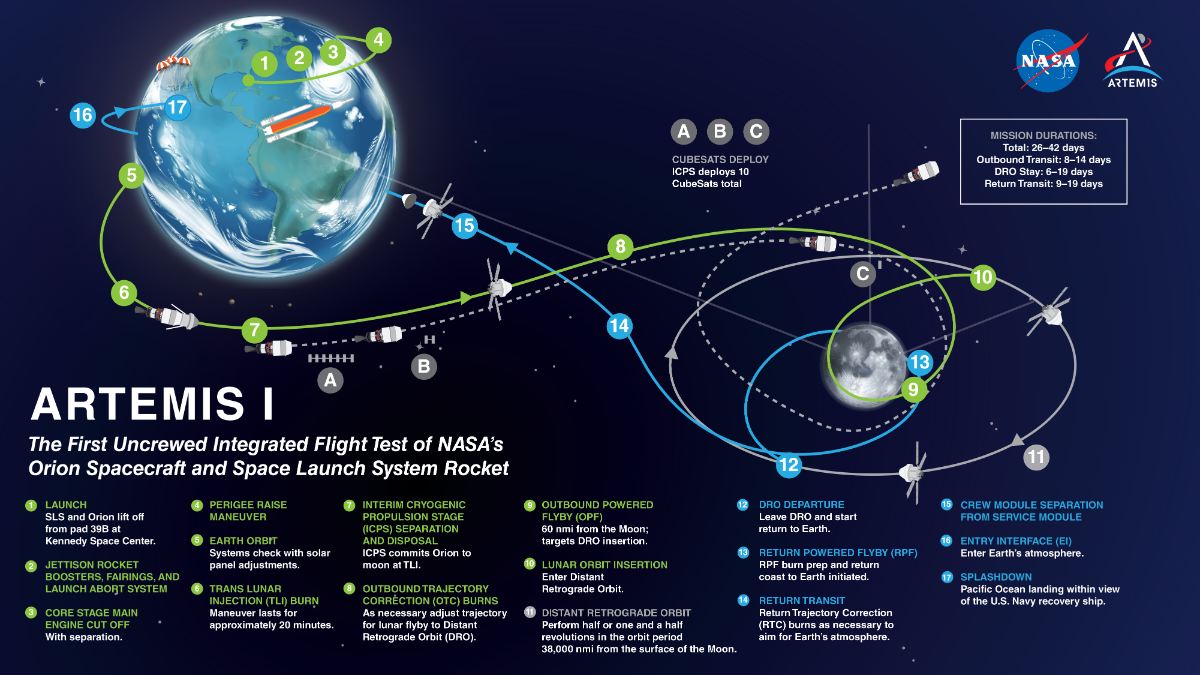
The Moon is currently of little interest to the world’s largest space missions. With the cancellation of the Constellation program in 2010 at Obama’s direction, even the United States has lost interest in the Moon. The main astronautical nations’ priorities have shifted in the wake of China’s successful landing of an autonomous probe on the far side of the Moon.
However, in order to be ready for a future Mars colony, the United States has planned a voyage to the Moon called “Moon to Mars,” which would enable the construction of a lunar facility in the year 2034. It is expected that the first lunar colony would be possible thanks to the Artemis program (scheduled to launch in 2022). So, after more than 50 years since the previous passage during the Apollo 17 mission, humanity might make its epic return to the Moon.
The industry of space travel is booming
A number of programs have been established since the turn of the millennium to make space flight possible for regular people without requiring them to undergo the rigorous training required of astronauts. The first flight was made in 2001 during the TM-32 mission aboard a Soyuz spacecraft.
Dennis Tito, an American multimillionaire, was the first space tourist. He paid a relatively modest $20 million to spend almost a week in Earth orbit. Many private enterprises have taken the lead in developing space tourism in recent years, and this has sparked a new race to the top. It seems that three firms have the necessary resources to take the crown.
First, Richard Branson’s Virgin Galactic (established in 2004) sells $250,000-per-person tickets for rides in space aircraft to an altitude of more than 80 kilometers. Then there’s Blue Origin, founded by Amazon’s founder Jeff Bezos, who takes things even farther by launching its New Shepard rocket over the Kármán line (100 km) for around 15 minutes.
Nonetheless, the price is substantially greater; $28 million was bid on the trip on July 20, 2021, with Jeff Bezos and his brother Mark. On September 15, 2021, tourists were finally able to ride SpaceX’s Falcon 9 rocket to the Crew Dragon spacecraft for the first time. Elon Musk, CEO and co-founder of SpaceX and Tesla, has made no secret of his fascination with space, as seen by his hopes for the colonization of Mars.
TIMELINE OF SPACE EXPLORATION
June 20th, 1944, and the V2 rockets had just been launched
In the Second World War, the Nazis developed the V2 rocket, marking the beginning of humankind’s conquest of space. It is possible to launch them over 100 km into the air.
On October 4, 1957, Sputnik was successfully launched
The first man-made satellite was launched into orbit by a Soviet R-7 rocket. Sputnik, whose name translates to “co-wayfarer” in Russian, is a 58-centimeter satellite that tips the scales at 83.6 kg. The satellite is then launched into a 900-kilometer orbit around the planet. We owe this technical achievement to Serguei Korolev, who is developing an ICBM. It’s based on the fact that the Germans were responsible for making V2 possible.
For the United States, this happened smack dab in the thick of the Cold War and was a direct provocation. There would be a “race to the stars” between the two superpowers, and it all started with the launch of the little spacecraft Sputnik 1. On January 4, 1958, Sputnik 1 disintegrated upon re-entry into Earth’s atmosphere.
On November 3rd, 1957, Sputnik 2 and the dog Laika were launched into space
Sputnik 2 was launched with Laika in a pressurized container one month after the first Sputnik satellite (Russian for “co-wayfarer”) was launched. The first live organism to be satellited is a little dog. Seven days later, the animal succumbs to oxygen deprivation.
First American satellite launched on January 31, 1958
It’s 10:48 p.m., and the Juno 1 rocket is finally ready to take off. The first American artificial satellite, Explorer I, weighing 14 kilograms, was launched into Earth orbit seven minutes later. America takes its turn in the conquest of space three months after the Soviet Union launched “Sputnik.”
On July 29, 1958, NASA was established
In order to beat the Soviet Union in the “space race,” President Eisenhower passed into law the creation of the National Aeronautics and Space Administration (NASA). NASA was in charge of coordinating the world’s aerospace and space exploration efforts. The United States was taken by surprise by the launch of Sputnik-1, and this organization was established in response. President Kennedy’s Moon program announcement in 1961 set the stage for NASA’s eventual success. In 1969, both parties honored the agreement to land a man on the Moon.
December 18, 1958, the world’s first communications satellite
This is the first experimental communications satellite launched by the United States, and the news came through a press release. The Atlas rocket launches the “SCORE” gadget into orbit for a 34-day test run. It sent seven transmissions to Earth, including a speech from President Eisenhower. In 1962, the first American television programs were sent via satellite to televisions throughout Europe.
The first space probe was launched on January 2, 1959
The Soviets are the first to successfully remove an artificial object from the pull of Earth’s gravity, after multiple failed efforts on both the Russian and American sides. The Lunik 1 spacecraft came within 6,000 kilometers of the Moon, but it ended up too far away from the Moon and instead entered a Sun-orbiting track a few months later. Even so, it sometimes broadcasted its scientific information. The American probe Pioneer made the same trip two months later.
A Soviet probe lands on the Moon on September 13, 1959
While the United States was still playing catch-up, the Soviets sent Luna II (or Lunik), the first lunar probe, to the Moon). This last one hits the Moon and leaves behind a Soviet flag shaped like a football. With this probe, scientists were also able to prove that solar winds do, in fact, exist.
October 7, 1959: First photos of the far side of the Moon
The first images of the far side of the Moon that cannot be seen from Earth were captured and sent back to Earth by the Soviet spacecraft Luna-3. Later, the world learned that it was far less uniform than the other side the Moon has always shown humans.
Yuri Gagarin launches into space for the first time on April 12, 1961
He was just 27 years old, yet his feat would live on in posterity. As the first human being to launch into space, Yuri Gagarin made history. He flew for 108 minutes on the rocket Vostok 1 (Orient in Russian), during which time he completed one orbit of the Earth. As a result, the Russians may rest certain that they are winning the space race against the United States.
May 5, 1961: Alan Shepard reaches space
Alan Shepard became the first American to circle the Earth a few weeks after Yuri Gagarin’s first voyage into space. This flight took just around 15 minutes and stayed at a low altitude (sub-orbital). John Glenn, on February 2, 1962, became the first true American astronaut.
On this day in 1961, man on the Moon by the end of the decade
The United States saw Yuri Gagarin’s orbital flight as a fresh insult; therefore, they made the strategic decision to strike back in the short term by achieving a goal that would demonstrate their technical dominance over the USSR. It was President Kennedy who made the public announcement that the Western powers wanted to put a man on the Moon by the end of the decade. Mankind would set foot on the Moon on July 21, 1969, proving that the Apollo program was successful and meeting its objectives.
September 12, 1961: Our destination is the Moon
In his now-famous “We chose to go to the Moon” address, President John F. Kennedy reaffirms the American goals first declared in May. As a result, the Apollo program is given more funding and attention at a time when its goals are most lofty. As the country that launched the first satellite and later the first man into space, the United States aims to beat the Soviet Union to this milestone.
February 20, 1962, John Glenn became the first American to orbit the Earth
The first American to take part in a human space voyage was astronaut John Herschel Glenn. It took him 4 hours and 56 minutes aboard the “Mercury Friendship 7” spacecraft to complete three orbits of Earth, covering a total distance of 129,000 kilometers. The ocean landing was successful 65 kilometers east of the Bahamas, close to the predicted target zone established by NASA scientists. Almost a year after Yuri Gagarin became the first man in space on April 12, 1961, the United States finally accomplished a human mission.
The satellite “Telstar” was launched on July 10, 1962
Florida’s Cape Canaveral was the site of the launch of the Telstar 1 communications satellite. It was created by the American telecom giant AT&T with the intention of keeping TV and phone lines open across the two continents. As a result of “Telstar,” the first transatlantic communications satellite, European viewers could tune in to a news conference held by President Kennedy, while American viewers could tune in to an entertainment show featuring Yves Montand.
Kennedy proposed space collaboration with the USSR on September 21, 1963
John F. Kennedy suggested to the United Nations that they organize a Soviet-American mission to the Moon as the United States and the Soviet Union entered a period of détente in the Cold War. The Soviet Union gave a neutral response. To the point where the Echo C satellite represents the culmination of their joint effort.
On March 18th, 1965, the first cosmonaut was launched into space
Alexei Leonov of Russia did a spacewalk for 15 minutes while still securely attached to his spaceship. The first human to ever float in space was him. On June 3, 1965, for around 20 minutes, American Edward White succeeded him.
The Space Race‘s first fatalities occurred on January 27th, 1967
Three astronauts perished in the burning capsule on Apollo 1, the first flight of the American space program. Spacemen Virgil Grissom, Edward White, and Roger Chaffee were all trapped aboard the burning spaceship on its first flight to Earth for preliminary ground testing. Initial plans called for launching the mission in February. According to the paper, the three astronauts died by breathing in a hazardous gas; however, the report did not specify what caused the fire. Before the Apollo program’s first human flight, several changes would be made.
October 18th, 1967: Venera 4’s mission was completed
Data on Venus’s atmospheric pressure and temperature are sent by the Russian space mission. There is a 94-minute window during which data is sent. The Soviet Union first sent a “Venera” probe to Venus in 1961. The first images of the surface of Venus were sent back by Venera 9 in 1975.
On December 24th, 1968, the first humans orbited the Moon
The Apollo 8 crew travels over the Moon three days after liftoff from Cape Canaveral. Frank Borman, James A. Lowell Jr., and William A. Anders make 10 times the turn of the star to conduct experiments for the future lunar landing, marking the first time that men have left Earth’s orbit to approach the Moon. On December 27th, after a successful six-day journey, they safely returned to Earth. The United States is getting ready to launch a mission to the Moon. For the first time, they made significant inroads against the Soviet Union.
Moon mission Apollo 11 lifted off on July 16, 1969
On July 16, 1969, on a mission to the Moon, astronauts Neil Armstrong, Edwin Aldrin, and Michael Collins took off. The Apollo 11 mission was a success on July 21, 1969, when astronauts Neil Armstrong and Buzz Aldrin became the first humans to set foot on the Moon.
The first human being landed on the Moon on July 20, 1969

At 02:56:15 GMT, Neil Armstrong stepped foot on the Moon at about 109 hours, 42 minutes after launch. He then said the thing that still remains engraved in our memories: “That’s one small step for man, one giant leap for mankind.” The world watched as Russia lost its space superiority in an event that was broadcasted across the globe.
Apollo 13’s “Houston, we have a problem” aired on April 13, 1970
When the Apollo 13 space shuttle is getting close to the Moon, an explosion occurs in the service module’s oxygen tank. The three astronauts on board are forced to immediately return to Earth once the program is terminated. During their rescue by the technical teams located in Houston, James Lovell, John Swigert, and Fred Haise took sanctuary in the LEM Aquarius. They make it to the South Pacific without any problems. Ron Howard’s 1995 film Apollo 13 dramatized the ill-fated mission of the crew of that spacecraft.
On April 17, 1970, the Apollo 13 crew successfully returned to Earth
Three American astronauts make it through the Apollo 13 mission unscathed, and they all touch down in the South Pacific without incident. Their dream journey into space was shattered four days before, 56 hours after departure, when an oxygen tank suddenly exploded at over 300,000 kilometers from Earth. The astronauts retreated to the Aquarius lunar module, which had dwindling supplies of oxygen and energy. There is a complete 180-degree turn from scientific goal failure to genuine human achievement.
On February 6, 1971, astronauts landed on the Moon and played golf
The first guy to play golf on the Moon was Alan Shepard. On January 31st, Shepard left the Apollo 14 spacecraft with Edgar D. Mitchell and Stuart A. Roosa and headed for the Moon. His “lunar walk” lasted 4 hours and 34 minutes, and he took Mitchell along for the ride. During his second walk (after 4 hours and 48 minutes), he indulges in his great enthusiasm for golf by hitting several balls near the Fra Mauro crater. In addition to Armstrong, Aldrin, Cernan, and Bean, Shepard is the fifth human to set foot on the Moon.
April 19, 1971: First manned space station
After failing to conquer the Moon, the USSR develops an orbiting station program and launches Salyut-1, the first station to host a human crew. In a pressurization disaster that occurred between June 7 and June 30, all three astronauts who inhabit the station perished. Humans occupied Salyut for a total of 813 days, and over 2,500 scientific experiments were conducted until the program was officially closed in 1986.
Mariner 9 went into orbit on November 14, 1971
After 167 days in space, the American spacecraft Mariner 9 was already in orbit around Mars. Its mission was to send back images of Earth’s surface and weather data. A catastrophic dust storm delayed the realization of photographs until January 1972, and the probe didn’t begin observing Mars’ satellites, Phobos and Deimos, until that month. Once the dusty mantle was removed, Mariner 9 would have until the end of its mission on October 27, 1972, to take over 7,000 photos. The spacecraft probably crashed into Mars’s atmosphere in 2022.
The United States sent its last lunar probe on December 11, 1972
Apollo 17 astronauts Gene Cernan and Harrison Schmitt, who set out on their mission on the 7th, finally landed on the Moon. A total of 74 hours, 59 minutes, and 30 seconds, or more than three days, were spent on the Moon by the crew. Apollo 17 was the final human trip to the Moon for the United States.
Pioneer 10 beginning its first orbit of Jupiter on December 3, 1973
The American Pioneer 10 probe was the first to provide data about Jupiter when it flew within 130,000 kilometers of the gas giant. The American interplanetary probe Pioneer 10 is the oldest of its kind, having been launched on March 3, 1973. In January of 1998, it vanished off the face of the Earth.
Apollo-Soyuz: a handshake in orbit, July 18, 1975
The United States and the Soviet Union hold hands in orbit to commemorate their historic first joint space mission. When the American Apollo and the Russian Soyuz spacecraft collide in orbit, astronaut Thomas Stafford and cosmonaut Alexis Leonov team up. In addition to the technological advancements, the actual revolution is political: after competing against one another for almost a decade in the race to space, the opposing forces finally came to an agreement. However, a more sophisticated level of collaboration between the United States and Russia can’t begin until the Mir orbital station is operational.
The Viking 2 probe set out toward Mars on September 9, 1975
NASA sent the Viking 2 spacecraft to Mars as part of an exploration initiative to take pictures of the Martian polar caps. The Viking 1 mission departed exactly one month before this one. The Viking project has returned hundreds of breathtaking images and other data about Mars and its moon Deimos. In 1978, the probes lost contact and were no longer transmitted.
On June 13, 1983, Pioneer 10 was launched into interplanetary space
The American probe “Pioneer 10” is the first terrestrial object to leave the solar system. Though it was only meant to operate for two years after its March 1972 launch, the probe was still sending out signals as late as January 2003. In 1973, it was the first to fly above the gas giant Jupiter; in 1983, it was the first to cross beyond Pluto’s orbit. The spacecraft was 82 times the distance from the Earth to the Sun away from us when it lost communication with us at a distance of 12.2 billion kilometers. The probe contains a gold plaque with a human description, Earth’s coordinates, and the mission’s launch date engraved on it.
February 7, 1984: Two astronauts spacewalk
To accomplish the first spacewalk without being tethered to a shuttle, two astronauts used the MMU (Manned Maneuvering Unit), essentially a rocket chair in 1984. For about five hours, astronauts Robert L. Stewart and Bruce McCandless floated in space roughly 100 meters from Challenger.
Voyager 2 passed by Uranus on January 24, 1986
The Voyager-II spacecraft stayed at a distance of 101,000 km (63,000 mi) from Uranus. Its studies shed light on the planet’s nine-ring system and its very diverse satellites, Miranda, Ariel, Umbriel, Titania, and Oberon. After leaving Earth in 1977, Voyager-II arrived at Saturn in August 1981 before continuing on to Uranus. They got to Neptune on August 25th, 1989. After that, it left the solar system and continued its orbit. As of now, communication is still going on.
The shuttle Challenger exploded on January 28th, 1986
The American space shuttle “Challenger” disintegrated into fragments 1 minute and 13 seconds after liftoff at 11:38 a.m. There were witnesses to the accident at Cape Canaveral, and millions more saw it on television. Sadly, the Challenger’s seven astronauts—including two women—were all killed in the blast. According to NASA’s study, the disaster was caused by the joint of one of the auxiliary thrusters breaking.
The Russian space station Mir was launched on February 20th, 1986
The core of the Russian space station Mir (which means “Peace”) was launched into orbit by a Proton rocket at a height of 350 kilometers. The 2.20-meter-diameter sphere weighed 21 tons. As of then, it was only waiting for modules to be connected to it. On March 13, 1986, humanity’s first mission to the “Mir” was launched. But the equipment obsolescence and the station’s prohibitive cost to maintain led to its demolition in 2001.
The planet Venus was discovered on May 4, 1989
The U.S. scientific exploration of Venus was assisted by the shuttle Atlantis, which propelled the American Magellan probe. Almost a year after it was sent into orbit, it was the first to provide a detailed map of Earth’s surface. After two years, it offered a map of 98% of the Earth using its radar to highlight the various volcanoes throughout the globe. Before it was destroyed in Venus’s atmosphere in 1994, the probe was used to explore the planet’s gravity. Learning about Venus’s geology and drawing parallels to our own planet was made possible by the Magellan expedition.
On April 24, 1990, the Hubble Space Telescope was sent into space
As a tribute to the late scientist Edwin Hubble, the space shuttle Discovery launched a telescope bearing his name into deep space. The first photographs that were sent to the scientists were a huge letdown. The primary mirror of the orbital telescope was flawed, resulting in very low picture quality.
In 1993, a crew of astronomers on the shuttle Endeavour were hopefully able to fix this flaw and make the system even better. There would be a series of subsequent missions to repair and upgrade this powerful orbiting observatory. Important findings made possible by these missions improve our understanding of how the cosmos works.
On August 28, 1993, Galileo discovered an asteroid with a moon orbiting it
On its approach to Jupiter, the American spacecraft Galileo found the first moon of an asteroid. A small satellite, just one kilometer in diameter, orbits the asteroid at a distance of around 100 kilometers from the surface. The asteroid measures 58 kilometers in length and 23 kilometers in width. Dactyl is a reference to a Greek god who ruled over Mount Ida.
On March 14, 1995, a Russian space shuttle carried an American astronaut
From Russia’s Baikonur spaceport first thing in the morning, astronaut Norman Earl Thagard takes off on the Soyuz TM-21 “Hurricane” rocket. For the first time ever, an American has flown on a Russian space mission. It is Thagart’s and his crewmates’ hope to make it to the Mir space station. Following 115 days in space, they have returned to Earth.
June 29, 1995: Assembly of Mir and Atlantis
Atlantis, a shuttle from the United States, arrived at the Russian space station Mir twenty years after Apollo and Soyuz first met. 395 kilometers above the ground, Vladimir Dezhurov and Robert Hoot Gibson did a handshake in a moment that went down in history. A total of ten astronauts share the spaceship until July 4 of the same year. The launch of international space cooperation and the building of a shared station called Alpha began with this gathering.
Incident at the Mir Space Station on June 25th, 1997
The Progress supply ship and the Russian space station Mir, whose core component was launched in February 1986, have been involved in a collision. Two Russians and an American astronaut work together to plug the leak and restore power. Due to the station’s many problems and the exorbitant expense of keeping it operational, the Russians made the decision to blow it up in March of 2001.
October 29, 1998: John Glenn returns to service
To begin a new mission aboard the shuttle Discovery, the 77-year-old man who was the first American in space in February 1962 prepared to lift off. He carried out experiments on the effects of ageing in space. After 9 days and 134 orbits around the Earth, John Glenn returned.
The Columbia space shuttle exploded on February 1, 2003
After 16 days in orbit, the shuttle Columbia was lost from NASA’s radar when it re-entered Earth’s atmosphere. Over Dallas, there are white streaks in the sky. There were seven fatalities; six Americans and an Israeli astronaut. A flaw in the heat shield has been discovered after extensive testing.
Launch of the Spitzer Space Telescope, 25 August 2003
NASA has launched its biggest infrared space telescope into orbit. The American astronomer who inspired its name is Albert Spitzer. Because of its superior sensitivity to infrared light, it can identify objects in the furthest reaches of the universe. Since infrared light cannot reach ground-based telescopes due to Earth’s atmosphere, it was crucial to launch such equipment into space.
The IRAS and ISO satellites were also able to examine star formation since they were launched before it. In fact, after stars are produced, they stay in a cloud state where they are completely hidden from view. Infrared radiation, however, may be used to pinpoint their location.
On October 15, 2003, China successfully launched its first cosmonaut
Yang Liwei, also known as a taikonaut, became the first Chinese cosmonaut after a 21-hour mission. After completing fourteen orbits of the planet, the Shenzhou V spacecraft returns to Earth and makes an emergency landing in a large Chinese plain. Forty years after the Soviet Union and the United States, China joins their ranks as the third nation with access to outer space.
July 1, 2004: Exploration of Saturn
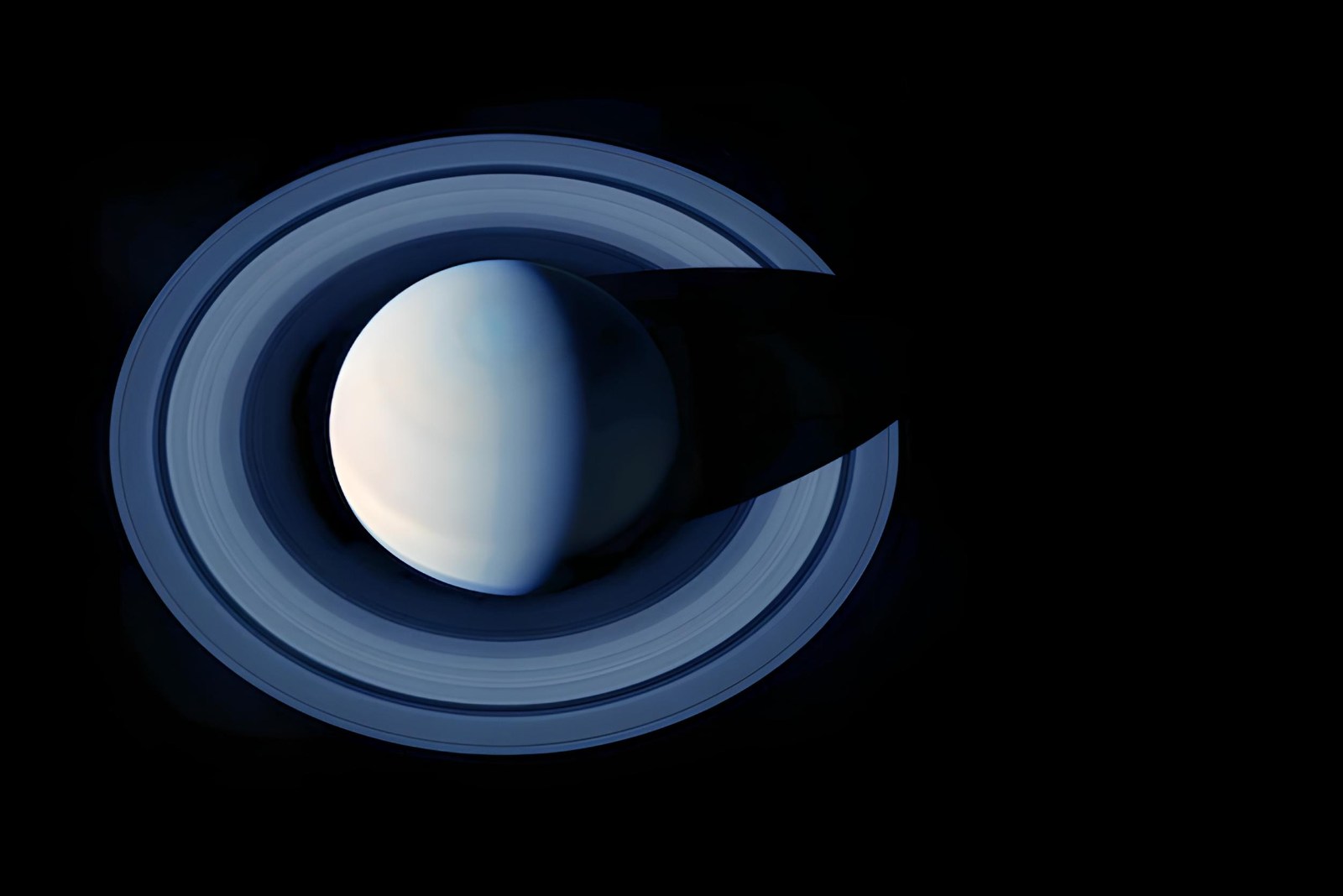
Finally, the Cassini-Huygens spacecraft arrived at Saturn. Since its 1997 launch, it had traveled a long way to reach its current orbit, and during that time it had supplied some valuable data, especially on Jupiter. The probe’s objective was to learn more about Saturn and its surroundings by analyzing its rings, moons, and other features.
Cassini, which investigated Saturn and its moons, and Huygens, which examined Titan’s atmosphere, made up the spacecraft. Two modules broke apart in December 2004. On January 14, 2005, as scheduled, the Huygens module entered Titan’s atmosphere at a depth of 65,000 km as Cassini drew near. By the end of 2008, the mission was complete.
On July 4, 2005, the Deep Impact spacecraft collided with the Tempel 1 asteroid
A month after its launch in January, NASA’s Deep Impact space mission successfully impacted comet Tempel 1 at a speed of 37,000 kilometers per hour, as predicted. This results in a massive crater and a cloud of dust. The Deep Impact probe’s goal is to study the comet’s interior composition by analyzing the ejected debris, crater surface, and impact results. Researchers are hoping to fill in some gaps in their understanding of how our solar system came to be.
Titan was first seen by the Huygens spacecraft on January 14, 2005
In 1997, NASA launched the Cassini-Huygens spacecraft into space. The mission’s goal was to investigate Saturn and its moons. The Cassini orbiter has resumed its survey of Saturn’s moons while the Huygens probe has touched down on Titan. The mission, which had already been extended twice due to its overwhelming success, finally ended in 2017.
The last Space Shuttle launch occurred on July 8, 2011
The US’s Atlantis was the last space shuttle to launch to the ISS. Once the shuttles retired, conventional launchers were to take their place.
On November 12th, 2014, a probe touched down on the comet’s surface
Using the comet 67P/Churyumov-Gerasimenko as a target, the European space probe Rosetta deployed a miniature lander called Philae on the comet’s surface. It studied the comet’s structure and soil composition. The Ariane 5 rocket successfully launched Rosetta in 2004.
The New Horizons mission flew past Pluto on July 14, 2015
The American spacecraft New Horizons was launched in 2006 to investigate Pluto and its satellites. In 2015, it completed its mission and moved on to investigate other planets in our solar system.
The first lunar landing on the Moon’s dark side occurred on January 3, 2019
The Chinese spacecraft Chang’e 4, which was launched on December 7th, 2018, completed an orbit of the Moon on December 13th. The Chinese lander landed on the far side of the Moon on January 3, 2019. The Yutu 2 rover was dropped off to study this part of the Moon.
May 30, 2020: First manned space flight by a private company
Elon Musk’s SpaceX is the first private business to be contracted by NASA to transport humans to the International Space Station (ISS). Bob Behnken and Doug Hurley, the mission’s protagonists, used SpaceX’s Falcon 9 rocket to successfully lift off. The Dragon V2 (or Crew Dragon) capsule separated from the rocket’s first stage and continued on its way to the ISS. U.S. President Trump was there at the Kennedy Space Center in Florida to see the launch.
When oxygen was synthesized on Mars on April 20, 2021
As part of NASA’s Mars exploration program, the Perseverance rover successfully converted carbon dioxide into oxygen on April 20, 2021. This marks a first in the annals of space exploration: the creation of oxygen on a distant world.
The CO samples collected from Mars’s atmosphere, (which is 96% carbon dioxide) made this procedure feasible. Five grams of oxygen were produced during the reaction, which was enough for an average person to breathe for around ten minutes and make tiny amounts of rocket fuel.
James Webb Space Telescope launch on December 25, 2021
The Ariane 5 rocket carrying the James Webb Space Telescope lifted off from Kourou. A space telescope of this magnitude has never been attempted before. It was a joint effort between NASA, the European Space Agency, and the Canadian Space Agency that resulted in the James Webb Space Telescope.



